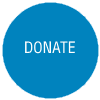How to therapy the ASD
“My child shuns other children, does not play with anyone. His room is like a perfectionist’s room: toys are neatly arranged in a row, and left carelessly thing on the bed is unnerving. He often screams and fusses if something does not go according to plan. Moms in the playground whisper accusingly as he throws a tantrum out of the blue. And only I know that my 5-year-old is autistic.”
Such complaints often accompany the parents’ stories in the psychiatrists’ and psychologists’ offices. But autism spectrum disorder (ASD) is not a sentence. The child lives happily and does not differ much from his peers with the right approach and timely reaction. How is this possible?
Autism: disorder’s signs in children ages 3 to 6 years
Autism includes several varieties of autism spectrum disorders (ASD). There are types of disorders: Asperger’s syndrome, Rett syndrome, atypical autism, early childhood autism. But there are common signs of autism that are typical for children ages 3 to 6 years whatever diagnosis is written at the medical card:
- Social contacts’ disruption. This symptom is typical for children with ASD of any age, but comes to the fore and becomes actual when the child is taken to kindergarten. Joining the children’s team causes irritation and a desire to run away. It manifests itself either actively (a child physically avoids children, runs away, or shows aggression), or passively (a child with ASD ignores peers, does not play with them, and does not reach out to society).
- Game features. An autistic child plays with toys or household items especially: he sorts, puts, arranges in shape or color. There is no plot in the game. The play sequence is also important: the child dresses or brushes the doll in the same order, without breaking the sequence. This is a kind of stereotype manifestation when a child with ASD acts according to a strict plan. Changes or inability to adhere to the order leads to anxiety and tantrums. Ritual actions appear at this age – to clap the hands before washing up, for example.
- Speech and intellectual disorders. An autistic child makes little use of the speech apparatus when it is physiologically intact. The child’s vocabulary is poor, often a shout or invented words and sentences are used for ‘communication’. It is difficult to concentrate and maintain attention for a child with ASD. He quickly loses interest and his activities are chaotic. Abstract and logical thinking, fantasy is not developed.
- Lack of self-preservation instinct. A child with ASD ages 3 to 6 years does not react to danger, even knowing what consequences it will lead to from experience. This often manifests itself in auto-aggression, when the child injures himself but does not stop due to pain. Scientists suggest that this behavior is associated with a low pain threshold for autistic people. But the phenomenon’s nature is not fully understood.
- Self and other people’s perceptions. Children with ASD are self-centered. They have lacking compassion sense and pity because they perceive others as an object, and not as a living being. Such kids are perplexed, why the wall can be hit without consequences but the younger brother feels pain and cries. A strong internal attachment to the mother remains at the same time. It externally manifests itself either by emotional coldness and indifference or by stress even with a short separation. Also, children with ASD do not show their feelings and emotions, and they say about themselves ‘you’ or ‘she’.
Medicine: parent’s of an autistic child age 3 to 6 years friendship with doctors
The underlying disorder often ‘coexists’ with several concomitant diseases in a child with ASD. Therefore, parents need to regularly comprehensive examine and make tests because a child cannot tell about the problem himself. Also, the autistic child needs to be consulted at:
- gastroenterologist – a child with ASD often suffers from the digestive system and metabolism disorders, which affects the state and behavior;
- otolaryngologist – ear infections are often observed in autistic children;
- allergist – ‘special’ children often suffer from various allergic reactions;
- a nutritionist – children with ASD need to follow a special diet because some meals worsen the health status;
- neurologist and psychiatrist – autism is accompanied by many brain disorders, vascular diseases, epileptic activity, attention deficit hyperactivity disorder, etc.
Parents are not advised to choose their medications. A pill that relieves a neurotypical child’s headache can be dangerous for autistic. Therefore, the need for treatment and a list of pills that are suitable for a particular child is prescribed only by a doctor.
Therapy for autistic children ages 3 to 6 years
Autism ‘treatment’ is only therapy. Sometimes doctors prescribe medicines for children with ASD. These pills are for accompanying diseases but not for the underlying disorder: to relieve pain, to reduce nervousness, hyperactivity, or allergies. There are no pills for autism, the causes of which are still unknown.
Cooperation with doctors and teachers, speech therapists, neuropsychologists is the main thing in the therapy of the children ages 3 to 6 years.
According to the director of the ‘Child with a future’ kindergarten for children with mental development disorders Natalia Struchek, the best teachers’ efforts will be in vain without solving medical problems: “If a child does not have developed speech skills, for example, then it’s not a bad speech therapist’s fault, but the immaturity of the brain’s left hemisphere. In this case, you need to work on pre-verbal speech therapy: to breathe, to accumulate passive vocabulary, to learn to perceive the teacher’s speech, and then gradually learn to imitate sounds. The parents’ efforts are also important: long baby’s nipple, drinker, and bottle usage, for example, simplifies the adults’ life but inhibits the correct exhalation skill, which delays speech development.”
You can check the child’s development level and draw up a program here.
Therapy principles of children with ASD ages 3 to 6 years:
- Interests and inclinations consideration. Autism, the symptoms of which differ from case to case, requires a selective pedagogical approach. Forcing to use cubes if the kid plays only with balls will not work. Therefore, consider the child’s interest before choosing a methodology and type of activity. It is important to develop movements’ coordination, fine motor skills, figurative, and logical thinking at this age.
- Schedule, sequence, repetition. Only regular classes and covered material repetition will help a child with ASD learn a skill. If a neurotypical kid, once having learned to put on socks, no longer requires training, then a child with ASD needs to be repeated. It is also important to adhere to schedule and sequence because autistic children are sensitive to changes. The breaks in the study often lead to academic and social regression. Therefore, you need to study constantly and without allowing pauses.
- Contact. A child with ASD needs communication like no other kids. It is a mistake not to allow other children to him. In a children’s team, a child with ASD learns to communicate and interact with others, to consolidate the behavior norms in society. But overloading should not be allowed, because everyone needs periodic solitude. Also, adults are encouraged to talk to a child even when it seems that he does not hear or does not respond to words. Natalia Struchek is convinced that there is nothing better for development than live communication: “Parents need to be emotionally involved even during watching a cartoon: to pronounce the hero’s emotions, to feel sorry if necessary. This forms empathic responses. I’m not against gadgets and the Internet, but it does not always correspond to the child’s psychological maturity. Children often see violence, aggression, which is perceived as the norm. The boundaries between play and reality are blurred in life. Also, even the most educational programs and videos do not provoke speech skills. So parents need not only to control the content but also to be included in the viewing.”
- Physical development and nutrition. Autistic children are often stressed or change from being hyperactive to lethargic. Therefore, regular exercise is importantю It relieves muscle tone and lifts where it is needed. Natalia Struchek recommends to ‘saturate’ the child’s sensory as much as possible (letting him smell, touch, feel, stroke, shift) and develop the body (allow you to climb, step over, jump, lift). This will gradually lead to fine motor skills, speech, school skills development.
To maintain a healthy body and avoid allergic reactions, a prescribed by a doctor diet is recommended. Some kids are recommended gluten and casein rejection, yeast products, a minimum of sugar. Other children are advised to consume more protein and minimize carbohydrates. Therefore, the selectivity in the meal problem is decided only after a medical conclusion.
- Animal assistant therapy, or close contact with animals. This method should be adopted by parents whose children enjoy interacting with animals. Some kids with ASD enjoy horseback riding or swimming with dolphins, for example. Communication with animals pleases and does not cause emotional stress, as is the case with people. This therapy method promotes an emotional state and non-verbal communication development.
- Parents’ health. The family learns to live with the child’s autism, and this is mentally exhausting. Parents worry about the kid’s future, feel depressed, and guilty of their beloved child’s disorder. At this time, adults need to be supported. They need to understand that ASD is not the end of the world, but a reality with which to live. There are many opportunities for a child’s development today- kindergartens and schools for autistic kids. There are groups in social networks, specialized therapy centers that offer psychological counseling and support for parents of ‘special’ children. Psychologists recommend for autistic child’s parents not to punish themselves and not be ashamed if those around them judge and do not accept the kid’s behavior. You are the best parent in the world who does the best for your child.

